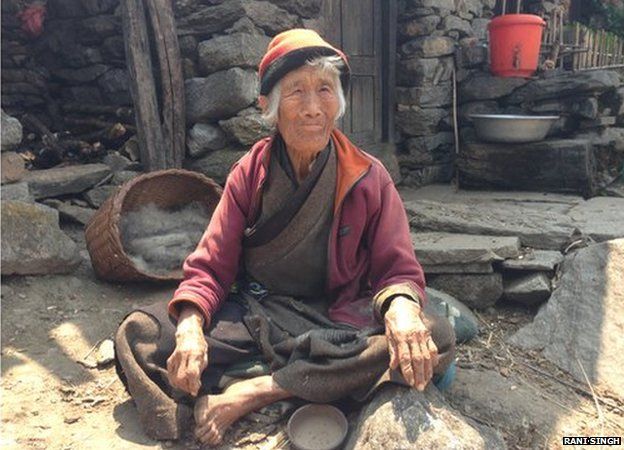Fears for Nepal's 'invisible' Tibetan refugees
- Published

The number of dead in the Nepal earthquake continues to rise.
But how can authorities be sure about the precise number, or even know where to search for victims among the Nepalese population, when there are tens of thousands of undocumented refugees?
Tibetans fleeing from China have been escaping across the treacherous Himalayan border ever since 1959, when the Chinese overran Tibet. And they have been risking their lives to make the crossing ever since.
Their goal has been to find refuge in Nepal, and, if possible, travel through an open border into India. A small number have been processed and are held in a refugee centre in the Nepalese capital, Kathmandu.
Only a minority of second-generation Tibetans have Nepalese citizenship. The bulk of them are living illegally.
They do not have residency rights and they do not have identity cards. They are stateless and therefore invisible.
Nepal is reluctant to talk about them for fear of upsetting its northern neighbour, one of the country's big investors.
Most ethnic Tibetans live quietly outside Kathmandu in remote villages scattered across the mountains, right up to the Chinese border.
Poorest of the poor
These villages lie right in the quake-affected zone - but those that have perished cannot be identified formally because officially they do not exist.
Ethnic Tibetan villages like Bridim - north of Kathmandu and close to the border with Tibet, at around 3,000 metres above sea level - are among the poorest in this poor rural nation and have been flattened after Nepal's worst earthquake in 80 years.
The Dolma Development Fund is one of the few non-governmental organisations that cares for Tibetan tribals in Nepal. It set up a school in Dhunche, not far from Bridim, to educate 500 ethnic Tibetan children and orphans of the area.
"Bridim is practically razed to the ground," Dolma's chief finance officer Carla Teixeira Alvares Kaspar said.
"We have no idea how many people have survived. There are no rescue missions operating in such isolated areas."
She is also worried about the water supply in Bhorle, in a valley close by.
"It's a big slum. We have children there. There is just one water pipe from the mountains and if that gets disconnected they have nothing. Then disease can spread very quickly."
She spoke of "horrendous landslides" hitting Dhunche.
"There is little communication and power. For refugees, this is the last straw. It was impossible before. There is so much destruction in Kathmandu."
'Nothing good'
"With the monsoon coming in a month or two, I don't anticipate they are going to restore electricity or even communication or minimal roads to the mountains before December. Everything is going to stop in the monsoons," said Ms Kaspar.
The chairman of the Dolma Development Fund, Tim Gocher, lives in Kathmandu with his Nepalese wife, Pooja. He sent this message.
"Pooja, the boys and I are all still fine, however things are much worse than we thought [on Saturday] as information comes through.
"The Dolma charity has lost children we sponsor, the school in Dhunche is largely destroyed along with most of the small houses in the town, and most of Bridim's houses are gone. Information on casualties and damage is patchy.
"We slept in the car last night and most people are too scared to go back to their homes. There are still aftershocks and I think we're not going back in today [Sunday]. Sorry for the bad news. There's nothing good about this situation."
Follow Rani Singh on Twitter